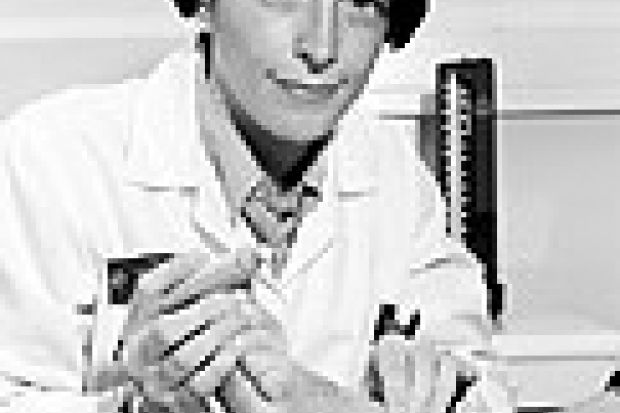'You can make a difference in people's lives' this podiatry teacher tells her students. She is a living example, says Esther Leach
"Group hug, group hug," someone calls out as Jill Edmondson brings her third-year podiatry students together for Friday-morning clinic. Everyone laughs as they huddle together for a brief pep talk before going to meet the patients who have been sent to them for treatment by local family doctors.
This morning, they are looking at the rationale behind each step of high-risk patient care and will have to give a verbal explanation for everything they do. "'It needs doing' isn't good enough," Edmondson says.
The bright, smart setting at Huddersfield University is in stark contrast to the conditions in Nepal, where Edmondson, 32, a senior lecturer in podiarty, spent four months researching similarities between leprosy and diabetes and their crippling effects on feet and lower limbs.
She made her first journey to India two years ago "because I had nothing else planned", she says. But Edmondson was not prepared for the horror of village living conditions and the incidents of leprosy she found.
"People there live such bleak lives, they have very little and they work so hard for just a subsistence living. But they are such friendly, open people," says Edmondson, who has spent her academic career - both as a student and teacher - at Huddersfield.
The university funded her return visit last year. She is passing on her experiences through discussions with her students. She will also pass them on via the university's School of Human and Health Sciences website, when its construction is completed. Her message to her students is simple. "You can make a difference to people's lives," she says.
"I came back knowing I can make a difference. If I can't be out there treating people, I can teach people who one day might go out there or whose work will have an impact there," says Edmondson, who lived in the hospital grounds during her stay.
"I want to instil in my students that they can make a difference to people's lives. That podiatry isn't about making someone's feet look nice so they can wear the latest fashion shoes. It's about keeping people mobile and preventing disability.
"It really gets to me when people here complain that they have to walk somewhere because there's a bus strike when the people out in Nepal walk - some of them on stumps - for days, sometimes weeks to receive treatment or to get work."
Some students who have finished their patient examinations drift into a room just off the clinic that has three new computers. There, they begin to log on to a list of websites recommended by Edmondson. Even in the short note she leaves for them as they sit in front of the screens, she emphasises the value of their work.
"Never underestimate the role that you play as a podiatrist when treating high-risk patients," she tells them. "The work that you do with these patients can potentially play a big part in maintenance of quality of life and prevention of disability and potential amputation. Try to find information about the risks of amputation for these patients and identify key ways that you can play a role in prevention of amputation."
A few cubicles along, Edmondson is listening to a student explain her reasons for treatment after checking the lower legs and feet of a patient who has vascular problems. Pleased with the student's answers, Edmondson circles a series of "smiley faces" on a clinical feedback chart that indicates how well the student has done in different areas of her clinical work and that will go into her portfolio.
"I introduced the idea of smiley faces because it's friendly," Edmondson says. She likes to encourage her students to be friendly and open with patients, and to involve them in their treatment as much as possible.
At least one student, Camilla Shaw, 21, is sold on the idea of travelling to Nepal, having been inspired by Edmondson's experiences. She turns briefly from the diabetic patient whose feet she is examining and says: "I want to travel and I want to be able to help people. Nepal seems a good place to start, if they will have me."
She adds: "I think podiarty has a poor image. People think it's about cutting toe nails when really it's about helping people have a better quality of life. We can make a difference, we can even save lives."
